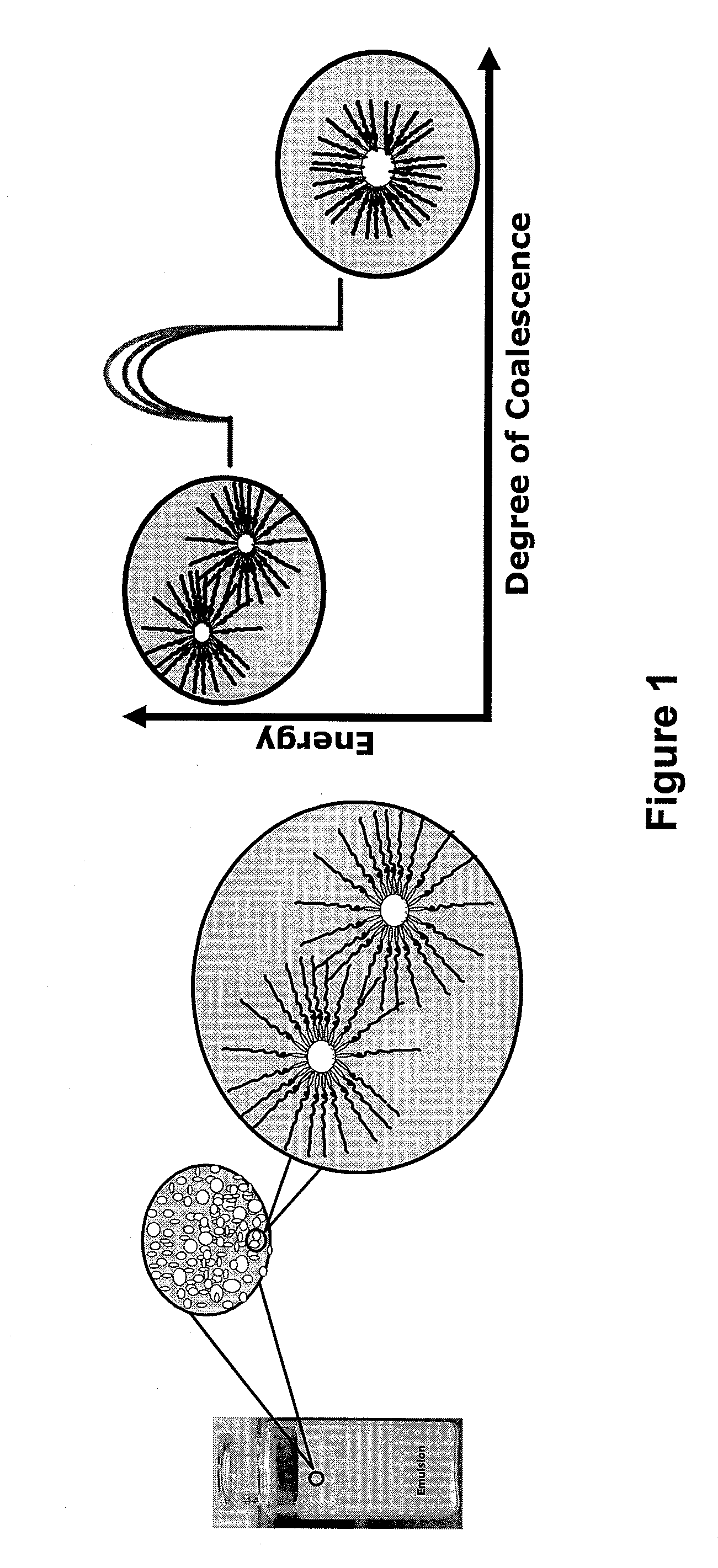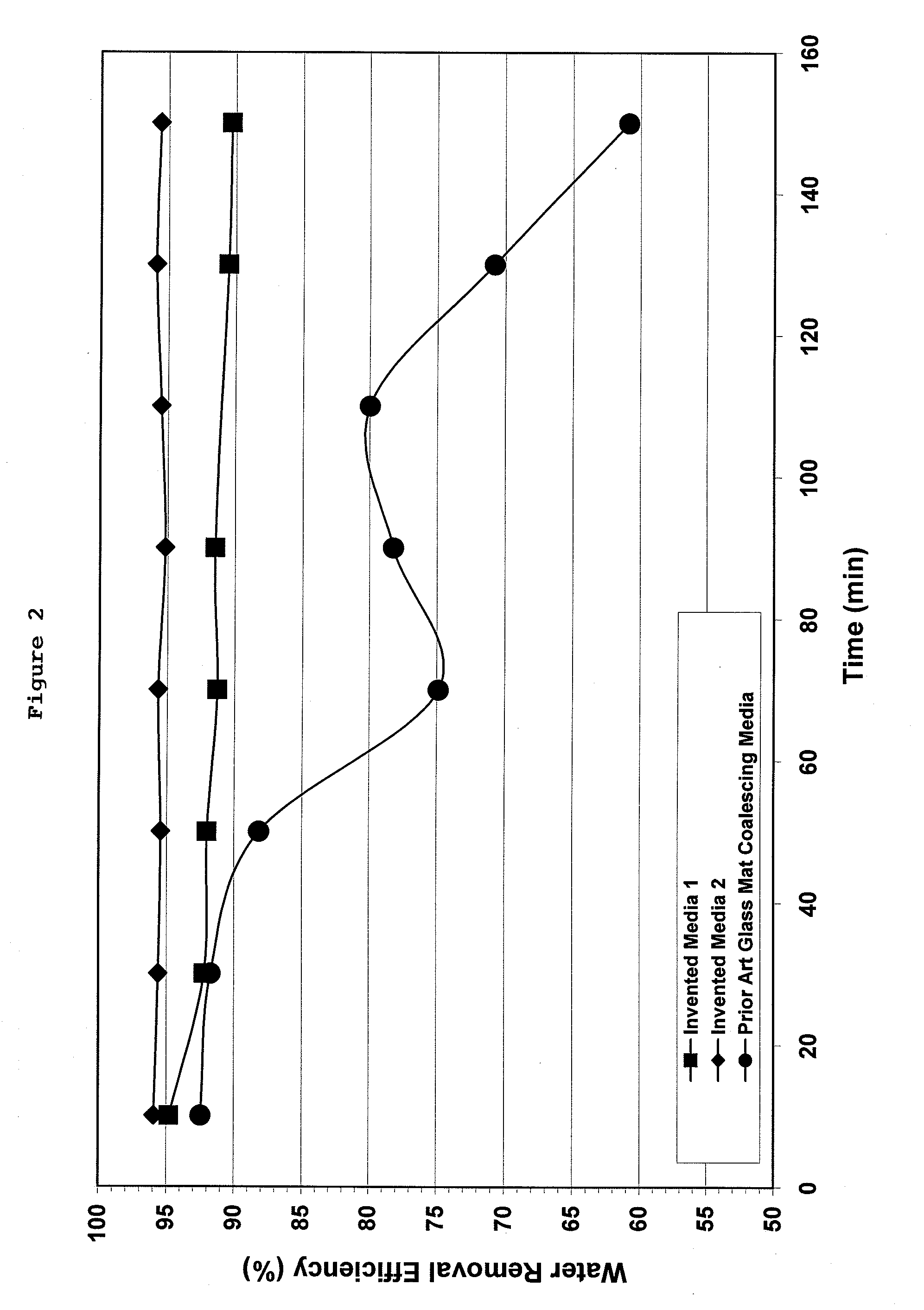Coalescence media for separation of water-hydrocarbon emulsions
a technology of water-hydrocarbon emulsion and coalescence media, which is applied in the field of sheetlike media, can solve the problems of affecting the separation effect of water-hydrocarbon emulsion, wet fiber surface, and inability to break an emulsion in coalescence media, and achieves the effect of sufficient permeability, without sacrificing permeability or thickness
- Summary
- Abstract
- Description
- Claims
- Application Information
AI Technical Summary
Problems solved by technology
Method used
Image
Examples
example 1
Single Layer
[0142]70.8% virgin Softwood Kraft Fiber
[0143]28.5% fibrillated Lyocell
[0144]0.5% polyamide-epichlorohydrin (PAE) resin wet strength additive
[0145]0.2% polyacrylamide dry strength additive
example 2
Single Layer
[0146]30.0% B-Glass 0.65 micron diameter
[0147]49.0% virgin Softwook Kraft fiber
[0148]20.3% fibrillated Lyocell
[0149]0.5% polyamide-epichlorohydrin (PAE) resin wet strength additive
[0150]0.2% polyacrylamide dry strength additive
example 3
Single Layer
[0151]67.00% Disruptor™ fiber
[0152]23.00% virgin Softwook Kraft fiber
[0153]9.70% fibrillated Lyocell
[0154]0.15% polyamide-epichlorohydrin (PAE) resin wet strength additive
[0155]0.15% polyacrylamide dry strength additive
PUM
| Property | Measurement | Unit |
|---|---|---|
| diameter | aaaaa | aaaaa |
| thick | aaaaa | aaaaa |
| thickness | aaaaa | aaaaa |
Abstract
Description
Claims
Application Information
 Login to view more
Login to view more - R&D Engineer
- R&D Manager
- IP Professional
- Industry Leading Data Capabilities
- Powerful AI technology
- Patent DNA Extraction
Browse by: Latest US Patents, China's latest patents, Technical Efficacy Thesaurus, Application Domain, Technology Topic.
© 2024 PatSnap. All rights reserved.Legal|Privacy policy|Modern Slavery Act Transparency Statement|Sitemap



